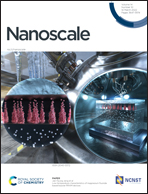Abstract
Although the chemistry of carbonyl-protected platinum nanoclusters is well established, their bonding mode remains poorly understood. In most of them, the average Pt oxidation state is zero or slightly negative, leading to the apparent average configuration 5d10 6sε (ε = 0 or very small) and the apparent conclusion that metal–metal bonding cannot arise from the completely filled 5d shell nor from the empty (or almost empty) 6s orbitals. However, DFT calculations show in fact that in these species the actual average configuration is 5d10−x 6sx, which provides to the whole cluster a significant total number of 6s electrons that ensures metal–metal bonding. This (“excited”) average configuration is to be related to that of coinage metals in ligated group 11 nanoclusters (nd10 (n + 1)sx). Calculations show that metal–metal bonding in most of these platinum nanoclusters can be rationalized within the concepts of superatoms and supermolecules, in a similar way as for group 11 nanoclusters. The “excited” 5d10−x 6sx configuration results from a level crossing between 5d combinations and 6s combinations, the former transferring their electrons to the latter. This level crossing, which does not exist in the bare Ptn clusters, is induced by the ligand shell, the role of which being thus not innocent with respect to metal–metal bonding.



 Please wait while we load your content...
Please wait while we load your content...